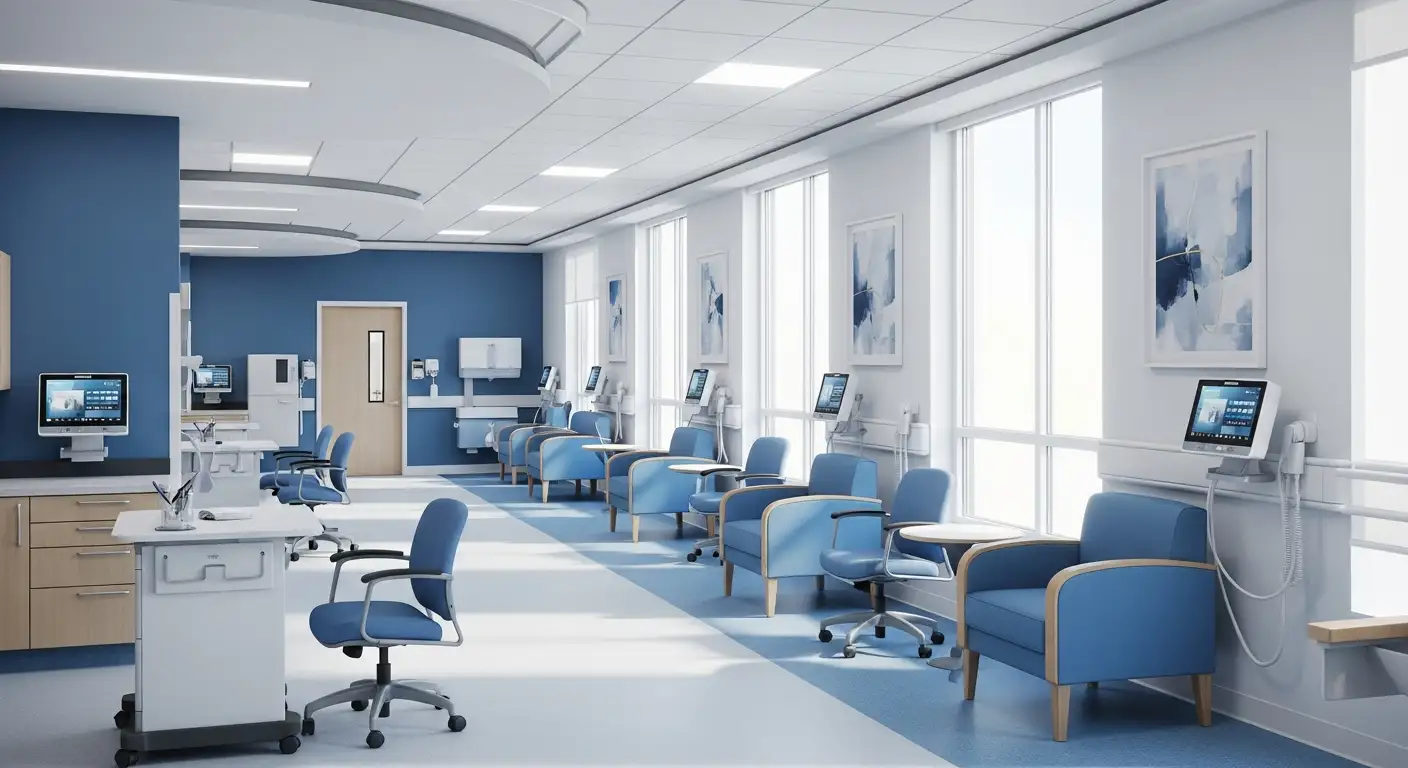Why Traditional Clinics Fall Short for Aging Populations

Understanding the Limitations of Conventional Healthcare for Older Adults
As the global and national populations age rapidly, traditional healthcare clinics are increasingly unable to meet the complex and diverse needs of older adults. From resource limitations to systemic fragmentation, many elements hinder effective elder care, necessitating a comprehensive re-evaluation of current healthcare models to ensure aging populations receive quality, accessible, and person-centered services.
Limitations of Traditional Clinics in Serving Aging Populations
What are the limitations of traditional healthcare clinics in serving aging populations?
Traditional healthcare clinics face numerous challenges when it comes to adequately serving older adults. One primary issue is resource constraints. Many clinics lack the specialized staff and facilities necessary to address the complex health conditions common among seniors, such as multiple chronic diseases, mobility issues, and cognitive impairments.
Moreover, the infrastructure of these clinics often is not designed with older adults in mind. Features like step-heavy entrances, poor lighting, and inaccessible bathrooms create physical barriers that can discourage seniors from seeking care. This situation is compounded by a general lack of staff trained specifically in geriatrics, leading to missed diagnoses and inadequate management of age-related health issues.
Systemic issues also play a significant role. Fragmentation within the healthcare system results in disjointed care, delaying treatment and complicating coordination among different providers. This inefficiency is particularly problematic for older adults requiring continuous, multidisciplinary management.
Various social and environmental barriers further limit access. Transportation is a significant obstacle for many seniors who no longer drive or lack reliable transit options. Unfavorable environmental conditions, fear of contracting illnesses like COVID-19, and social isolation diminish their likelihood of attending appointments regularly.
Economic factors also influence access. Insufficient health insurance coverage or high out-of-pocket costs can deter older adults from seeking necessary healthcare, leading to increased reliance on emergency services and hospitalizations. Overall, these limitations highlight the urgent need for systemic reforms, infrastructure improvements, workforce training, and innovative care models focused on the specific needs of aging populations.
Systemic Challenges Facing Conventional Geriatric Care
What systemic issues does conventional geriatric care face?
Geriatric care in the traditional healthcare model encounters numerous systemic challenges that hinder its effectiveness and reach. One of the most pressing issues is the significant shortage of specialized geriatricians. Currently, there are only about 9,000 geriatricians practicing across the country, a number too low to meet the increasing demand driven by demographic shifts. As the population of adults aged 65 and older is projected to reach 82 million by 2050, the gap in specialized care becomes more critical.
Alongside the shortage of specialists, the healthcare workforce as a whole is insufficient and aging itself. Predictions indicate a need for nearly 140,000 additional physicians by 2033, with many healthcare providers nearing retirement. This gap contributes to longer wait times and less individualized care for older adults.
Further compounding these issues is the fragmentation within the healthcare system. Older adults often receive care from multiple providers across different settings that are not well coordinated. This fragmentation can lead to duplicated tests, medication errors, inconsistent treatment plans, and overlooked social determinants affecting health.
Limited geriatric training among general healthcare providers also plays a role. Most physicians and clinicians lack formal training in geriatrics, which impacts their ability to address complex issues like polypharmacy, cognitive decline, and mobility challenges. Policy and reimbursement models, such as Medicare’s reimbursement structure, tend to favor procedures over comprehensive management, discouraging providers from dedicating time to holistic assessment.
Finally, infrastructural and societal barriers, including limited access to care in rural and underserved areas and systemic inequities, hinder efforts to deliver equitable, effective care to older adults. These challenges collectively undermine the capacity of conventional systems to meet the complex, multifaceted needs of aging populations and call for strategic reforms and innovative solutions.
Gaps in Healthcare Policies, Training, and Infrastructure Affecting Elder Care
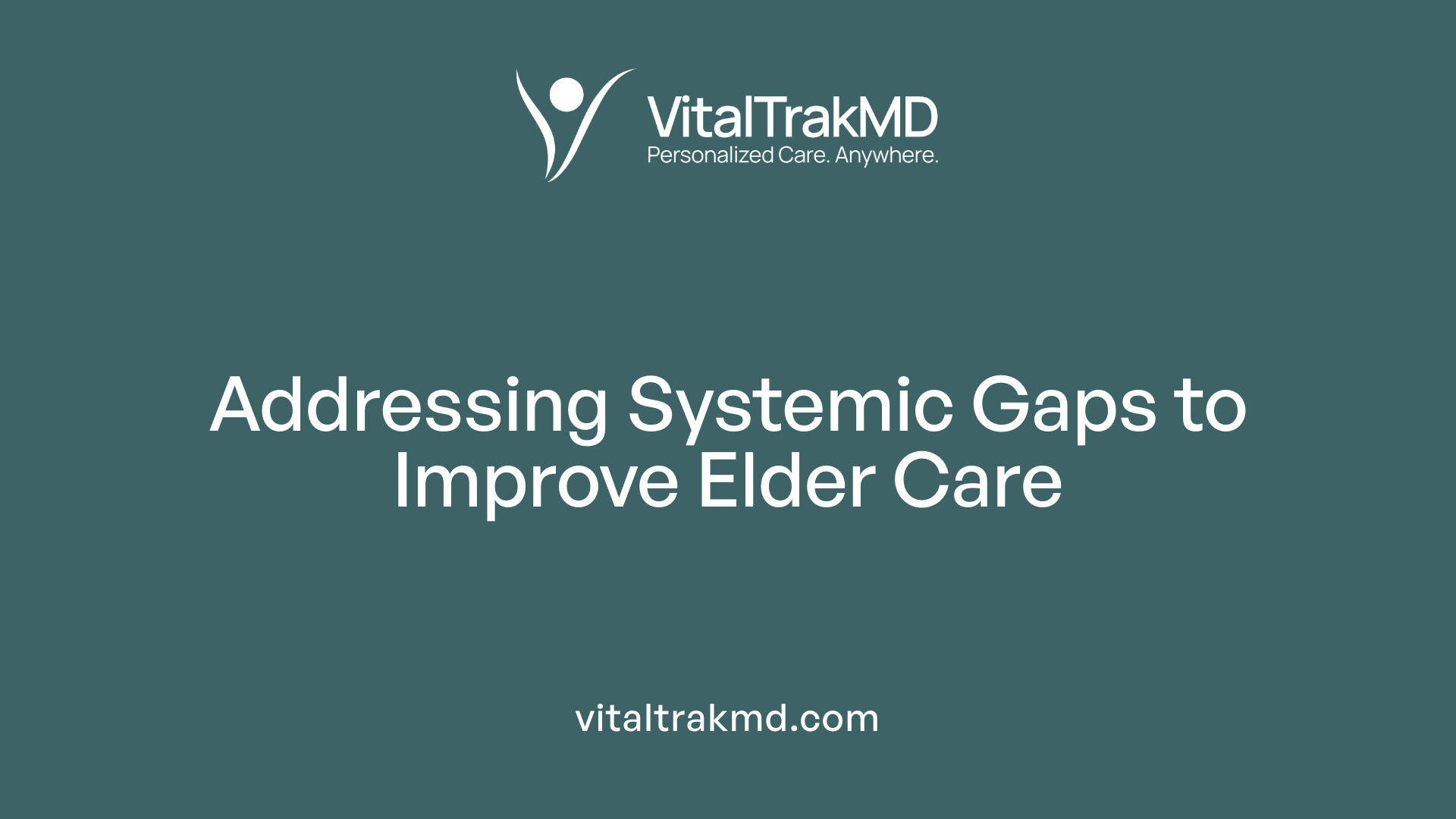
Where are the gaps in current healthcare policies, training, and infrastructure that impact elder care?
Current gaps in healthcare policies, training, and infrastructure significantly influence the quality and accessibility of care for older adults. One major issue is the inadequate focus on prevention and management of chronic diseases, which are prevalent among seniors and responsible for most healthcare expenditures. Traditional policies tend to emphasize curative treatments rather than promoting holistic, preventive, and person-centered care.
Fragmented care systems are another barrier. The lack of coordination among hospitals, primary care providers, specialists, and community services leads to disjointed treatment plans and gaps in care delivery. This fragmentation makes it difficult to address the complex needs of older adults, especially those with multiple chronic conditions or mobility issues.
A significant shortage of trained healthcare professionals specializing in geriatrics compounds these problems. There are only about 9,000 geriatricians in the U.S., far fewer than needed to meet the rising demand. Furthermore, most healthcare providers lack specialized geriatric training, reducing their ability to manage age-related health issues effectively.
Infrastructure deficits are particularly evident in rural and underserved areas. Limited access to transportation, telehealth services, and community-based support hampers timely healthcare access and necessary home-based or preventive services. These gaps increase disparities, especially for low-income or minority elderly populations, who face additional barriers like housing, social isolation, and lack of social support.
Social determinants of health such as economic stability, safe housing, nutrition, and social inclusion are often overlooked in healthcare policies. Ignoring these factors exacerbates health disparities and hampers efforts to promote healthy aging.
Addressing these systemic issues requires comprehensive reform to develop integrated, equitable, and age-friendly healthcare systems. Such reforms should promote preventive care, enhance workforce training, improve infrastructure in rural areas, and incorporate social determinants into policy planning to ensure all older adults receive the support they need to age healthily.
The Need for Age-Friendly and System-Adapted Healthcare Solutions
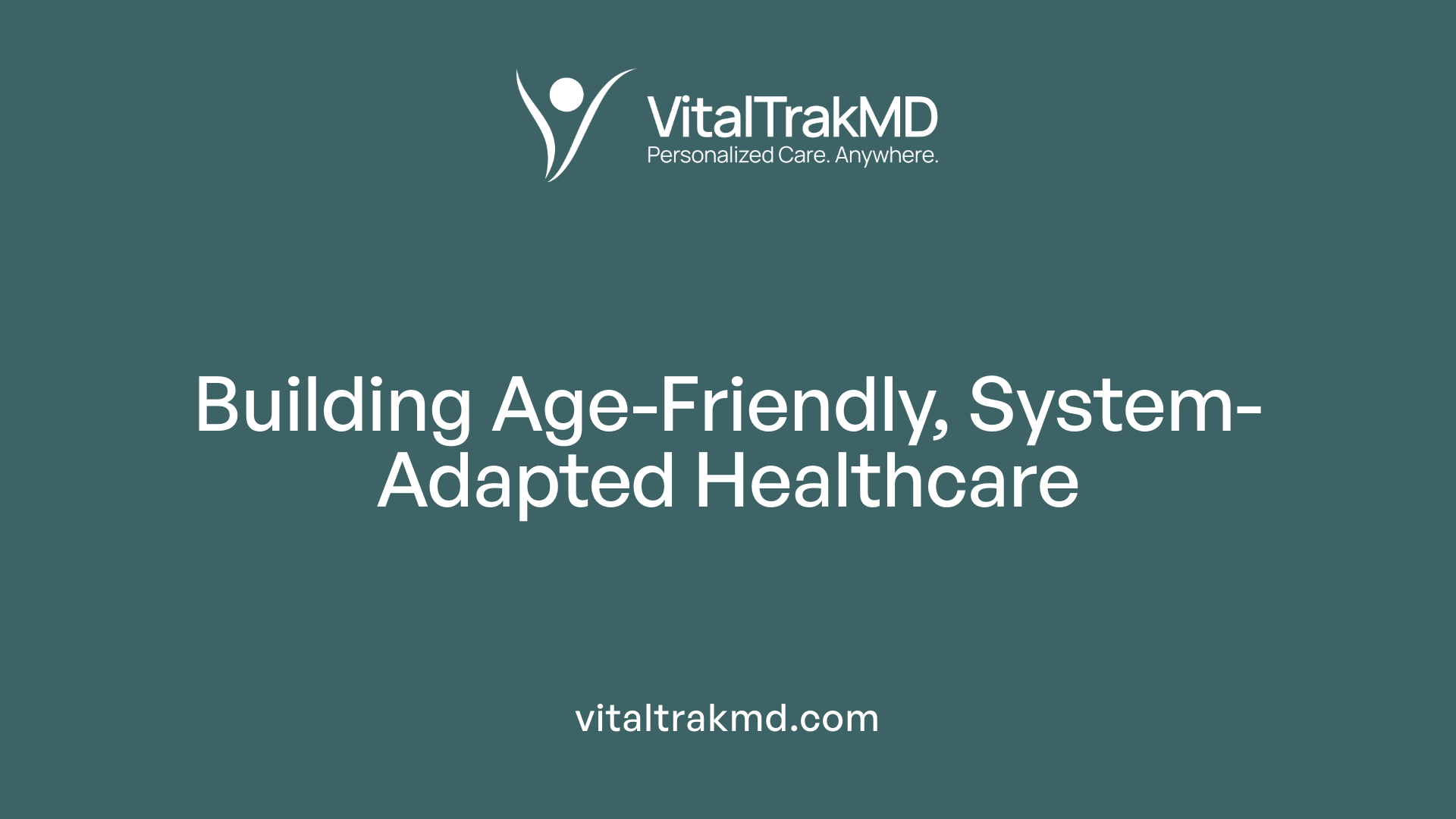 As the population aged 65 and older continues to grow rapidly, reaching an estimated 82 million by 2050, the demand for healthcare systems that truly meet their needs becomes urgent. Older adults often face complex health conditions, including multiple chronic diseases and functional decline, which require more than just disease treatment. Instead, they need holistic, person-centered care that respects their individual preferences and priorities.
As the population aged 65 and older continues to grow rapidly, reaching an estimated 82 million by 2050, the demand for healthcare systems that truly meet their needs becomes urgent. Older adults often face complex health conditions, including multiple chronic diseases and functional decline, which require more than just disease treatment. Instead, they need holistic, person-centered care that respects their individual preferences and priorities.
One effective approach gaining traction is the implementation of age-friendly health systems centered around the 4Ms framework: What Matters, Medication, Mentation, and Mobility. This model prioritizes understanding each older adult’s personal goals, managing medications carefully, supporting mental health, and maintaining mobility to promote independence. Integrating these components can lead to better health outcomes and higher satisfaction for patients and their families.
Reducing hospitalizations and healthcare costs is another critical benefit of adopting age-friendly care. By emphasizing preventive and coordinated services—such as home-based care and community support—these models aim to keep older adults healthier and in their preferred living environments longer. This approach not only enhances quality of life but also alleviates pressure on healthcare facilities.
Promoting aging-in-place is a central goal, allowing older adults to live independently in familiar surroundings. Safe home modifications, assistive devices, and telehealth solutions help prevent falls and address safety concerns, enabling many to stay in their homes comfortably. Moreover, community programs and collaborations are vital in supporting this infrastructure, especially in rural and underserved areas.
Overall, transforming healthcare into more age-friendly, adaptable, and person-centered systems is essential. Such reforms ensure older adults receive equitable, respectful care that reduces unnecessary hospital stays, improves their quality of life, and efficiently manages the increasing healthcare demands of aging populations.
For further insights, searching for "age-friendly healthcare models" provides a wealth of information on successful initiatives worldwide that illustrate these principles in action.
Challenges Faced by Vulnerable Elderly Groups
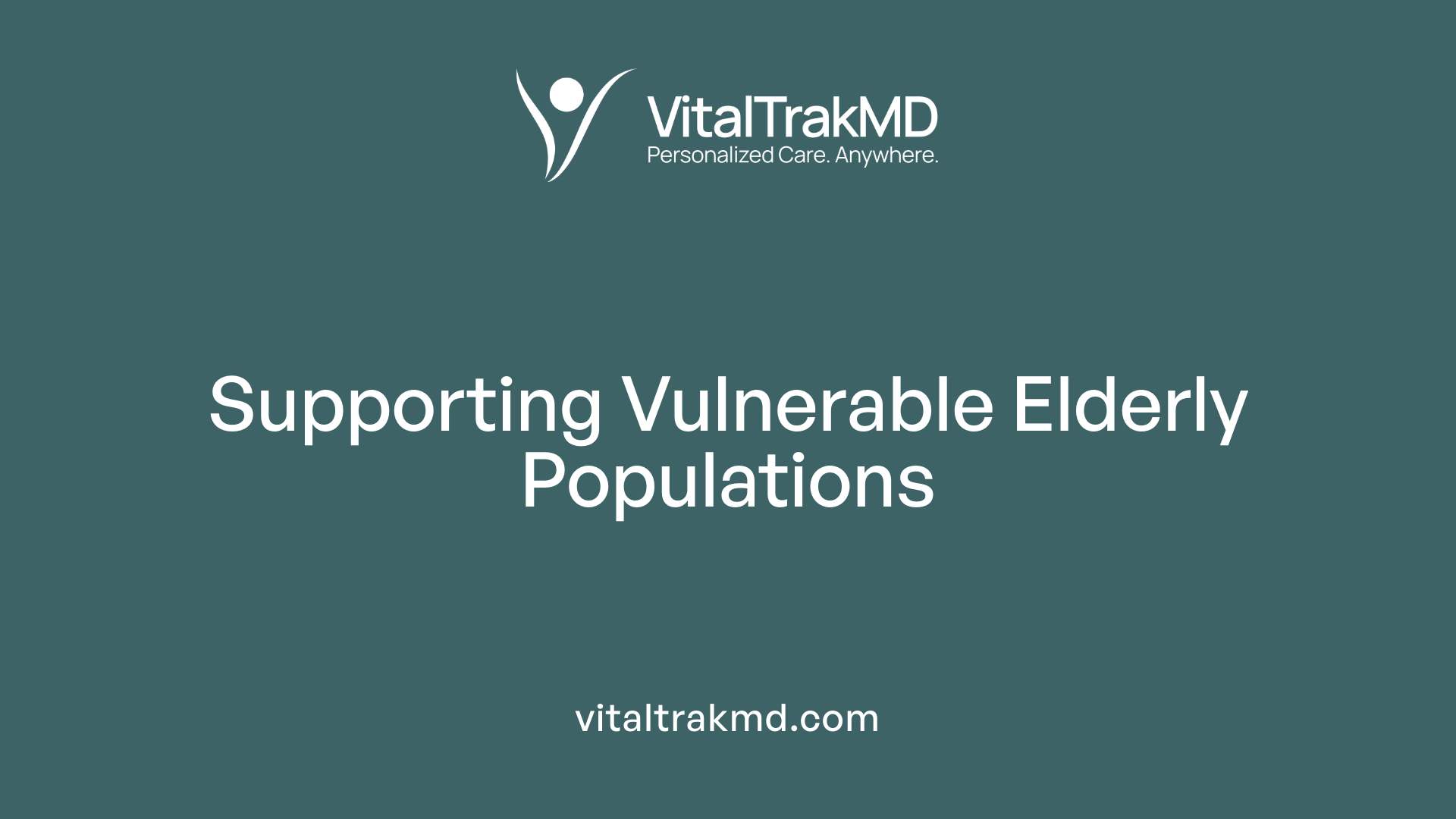
What specific challenges do vulnerable groups such as rural residents, homeless, or older women face in healthcare?
Vulnerable populations, including rural residents, homeless individuals, and older women, encounter numerous obstacles in accessing quality healthcare. Geographic barriers in rural areas often mean fewer healthcare providers, longer travel distances, and limited transportation options, making routine care difficult. Homeless adults, despite often being younger than their housed counterparts, face significant health disparities such as higher rates of cognitive issues, vision impairment, urinary incontinence, and mobility challenges. They often struggle with daily activities like bathing, dressing, and managing medications, which are compounded by lack of stable shelter and resources.
Older women, especially those living alone or with limited social support, are at heightened risk for social isolation, functional decline, and unmet health needs. Social isolation, affecting about one in four older adults, increases risks of premature death, dementia, and mental health issues. These groups frequently contend with multimorbidity—commonly, 88% of older adults have at least one chronic condition—and cognitive impairments that complicate management of their health.
Systemic issues such as disparities in care access and affordability, workforce shortages, and fragmentation of services further hinder effective treatment. These populations are more likely to experience delayed diagnoses, reduced follow-up care, and poorer health outcomes, resulting in higher costs and increased demand for emergency and long-term care.
How do access barriers, social isolation, and functional decline impact these groups?
Access barriers—geographic, financial, and transportation-related—limit timely medical intervention and ongoing care for vulnerable groups. Social isolation exacerbates mental health issues, increases risks for depression, and diminishes engagement in health-promoting behaviors. Functional decline, characterized by decreasing mobility and difficulty with daily tasks, further isolates individuals and reduces their ability to seek or adhere to medical advice.
For homeless adults, lack of stable shelter makes consistent care impossible, leading to unmanaged conditions and frequent emergency visits. In rural areas, the scarcity of specialized geriatric services leaves many older adults without necessary support. These issues collectively contribute to a cycle of worsening health, loss of independence, and increased healthcare utilization.
What are the specific needs regarding safety, mobility, and social support?
Older adults in vulnerable groups have acute needs in safety, mobility, and social support. Home safety modifications—such as grab bars, improved lighting, and removal of tripping hazards—are essential to prevent falls, a leading cause of injury. Mobility support through assistive devices and physical therapy can help maintain independence and prevent functional decline.
Social support networks are vital in reducing isolation and fostering mental and emotional well-being. Community programs, such as area-specific home visits, support groups, and social activities, can address loneliness and promote healthful aging. Interventions tailored to the unique circumstances of each group—like mobile clinics for rural residents or outreach services for the homeless—are crucial for bridging gaps in care.
To effectively serve these vulnerable populations, healthcare systems must integrate social services, improve transportation options, and develop culturally sensitive, community-based solutions. Addressing these specific safety, mobility, and social support needs can significantly enhance health outcomes and quality of life for the most at-risk elders.
Shortcomings of Current Healthcare Models in Managing High-Need Elderly Patients
How do current healthcare models fall short in managing complex health needs and high-cost beneficiaries among the elderly?
Existing healthcare frameworks often struggle to effectively support elderly patients with multiple chronic conditions and complex needs. One significant issue is limited integration across different care providers and services. Many models focus on isolated treatments rather than a coordinated, holistic approach that considers medical, psychological, and social aspects of aging.
This fragmentation leads to disjointed care experiences, increased hospitalizations, and higher costs. Standard outpatient clinics frequently lack the capacity to address the unique needs of high-need older adults, such as managing multimorbidity, cognitive decline, and mobility issues.
Additionally, current models tend to lack personalization. They do not sufficiently adapt care plans to individual preferences, values, and circumstances, diminishing the quality of life for many seniors.
Caregiver involvement is often overlooked, despite caregivers playing a crucial role in supporting daily activities and health management. Many programs do not actively engage family or community caregivers, which results in missed opportunities for enhanced support and better health outcomes.
Technological barriers and policy challenges further hinder the delivery of effective high-need care. Limited access to advanced IT systems complicates information sharing, while policies can lack the flexibility needed to implement innovative care approaches.
To improve outcomes, healthcare systems should adopt more integrated, person-centered models. This includes leveraging technology, aligning policies to incentivize comprehensive care, and fostering organizational changes that prioritize the complex needs of elderly populations. Such reforms are vital to reduce costs, improve quality, and ensure equitable, accessible care for high-need seniors.
Why Primary Care Often Falls Short in Geriatric Management
Why is traditional primary care often ineffective in managing geriatric conditions and aging-in-place needs?
Managing the health of older adults requires a comprehensive and personalized approach. However, many primary care providers are not trained in geriatrics, which limits their ability to address the complex health issues faced by seniors.
Older patients often have multiple chronic conditions like diabetes, heart disease, and arthritis. These conditions interact in ways that require careful, coordinated treatment strategies. Geriatric care involves understanding how age-related changes affect medication management, cognition, mobility, and daily functioning.
Most primary care clinics lack the resources and team-based services essential for effective geriatric care. Geriatricians, who specialize in aging-related conditions, are few—only about 9,000 in the U.S.—and trained teams like social workers, physical therapists, and pharmacists are often missing.
Furthermore, aging-in-place and social needs are frequently overlooked in standard primary care. Issues like social isolation, home safety, and access to social services play a crucial role in elderly health but are not systematically addressed.
To improve, healthcare systems need to integrate geriatrics expertise into primary care settings and train more general practitioners in age-specific care. Better care coordination and seconding specialized teams can help address the multidimensional needs of the aging population, ensuring they receive holistic, effective support in their communities.
Systemic Shortcomings in Existing Clinics Related to Responsiveness and End-of-Life Care
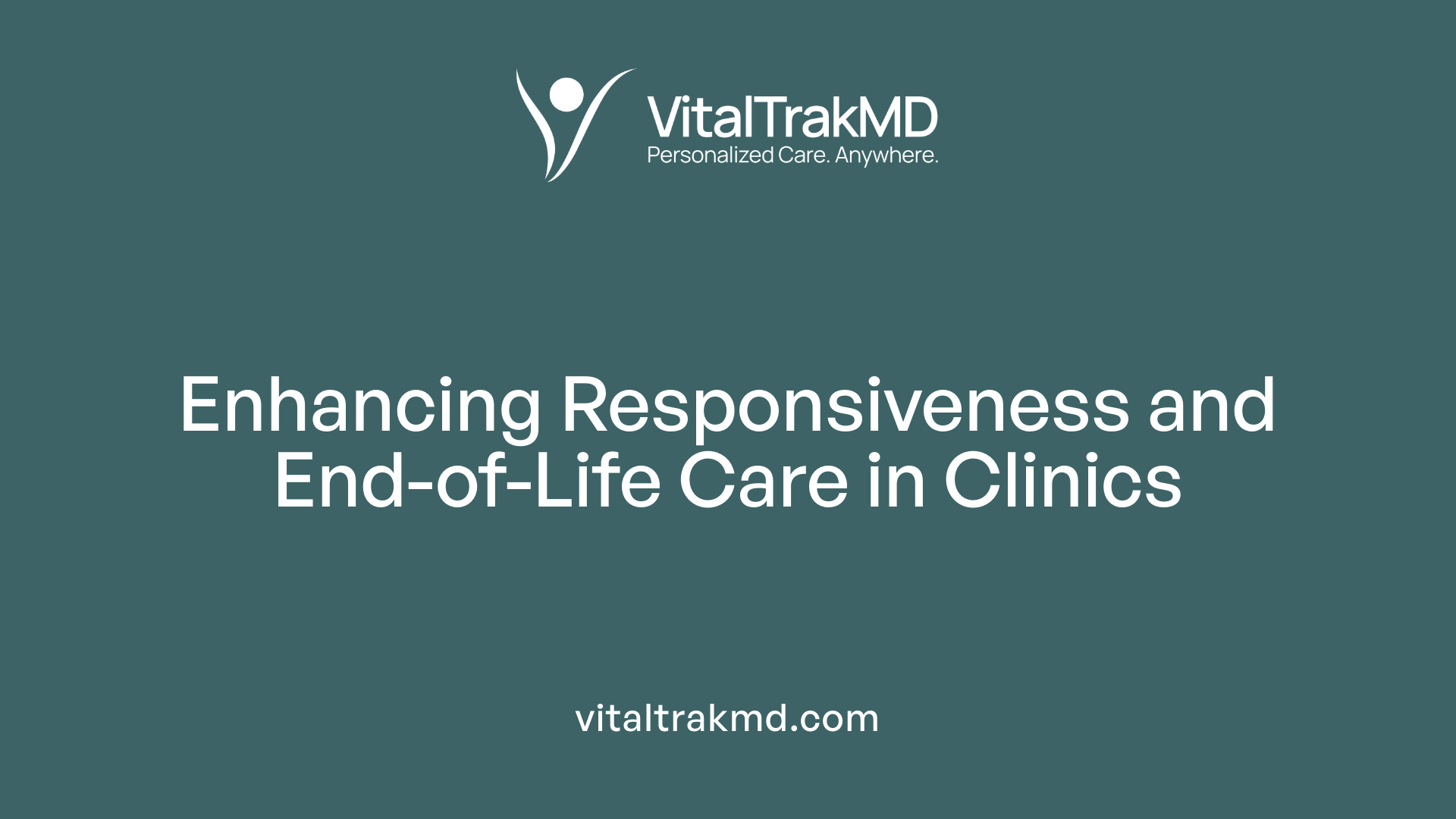
What systemic shortcomings exist related to responsiveness, quality, and end-of-life care in existing clinics?
Current clinics often struggle to meet the complex needs of aging populations effectively. One major issue is the workforce shortage, with insufficient numbers of trained geriatricians and specialists, leading to longer wait times and rushed visits. This shortage impacts the responsiveness of care and often results in delays or inadequate management of chronic and end-of-life conditions.
Furthermore, healthcare models are frequently fragmented. Patients experience poor coordination during transitions between hospitals, clinics, and home care, increasing the risk of errors and gaps in treatment. Communication between providers and with patients is often limited, which can lead to misunderstandings, missed symptoms, or inappropriate interventions.
Biases in treatment contribute to disparities in care quality. Older adults sometimes face ageism, resulting in delayed diagnosis or an underestimation of their treatment preferences. This can lead to unnecessary procedures or neglect of palliative approaches that focus on comfort during end-of-life care.
Disparities are also pronounced among underserved populations. Socioeconomic factors, geographic location, and technological gaps hinder access to quality care. In rural and low-income communities, limited resources and providers mean delays in diagnosis, treatment, and end-of-life planning, worsening health outcomes.
Addressing these systemic shortcomings entails implementing comprehensive reforms. Expanded geriatric training for clinicians, integration of palliative and person-centered care models, and better regulatory oversight are essential steps. Improving communication pathways and reducing disparities through targeted policies can enhance responsiveness and ensure that all older adults receive equitable, timely, and appropriate end-of-life care.
The Role of Research and Innovation in Elder Care Improvement
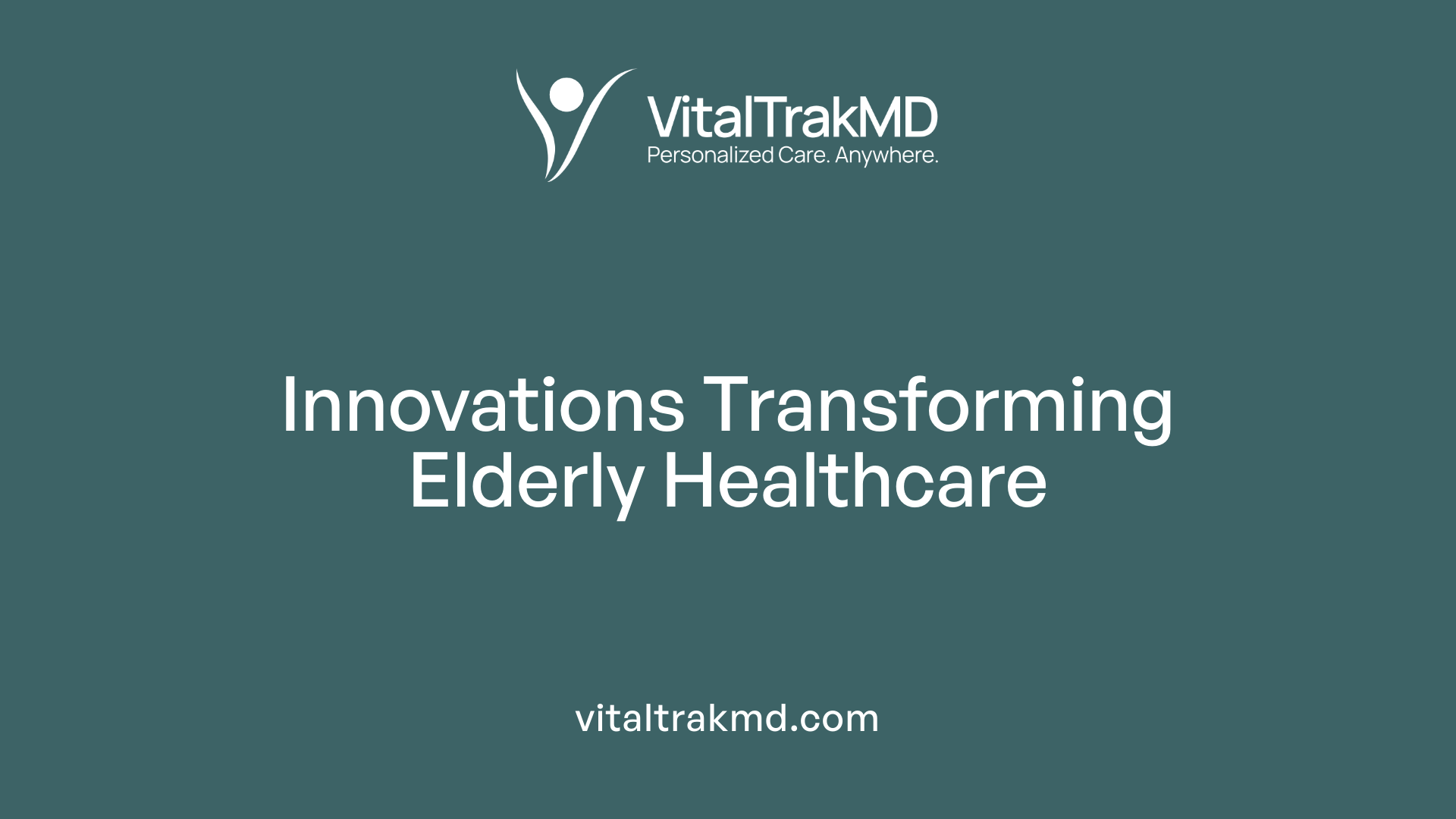
Why is research and innovation essential for improving elder healthcare?
As the global population ages rapidly, the demand for more effective and personalized elder care solutions grows. Research and technological innovation are crucial in developing systems that meet the complex health needs of older adults, helping to improve their quality of life and reduce healthcare costs.
Advancements in technology, such as artificial intelligence (AI), telehealth, robotics, and wearable devices, are transforming elder care. These tools enable continuous monitoring of chronic conditions, promote safety inside the home, and support independence. For example, AI algorithms can predict health deterioration, allowing for proactive interventions, while robotic assistive devices can aid mobility and daily tasks.
Policy and infrastructural developments are also necessary to create age-friendly environments. Building accessible healthcare facilities, integrating community-based services, and expanding telehealth capabilities enable older adults—particularly those in rural or underserved areas—to access appropriate care.
Personalized and data-driven care models further enhance treatment effectiveness. By leveraging big data and health records, providers can tailor interventions based on individual health status, preferences, and social circumstances, making care more responsive and appropriate.
However, integrating new technologies and models raises ethical and privacy considerations. Ensuring data security, respecting patient dignity, and maintaining informed consent are vital as eldercare becomes more digitally interconnected.
Ultimately, research and innovation not only improve health outcomes and safety for older adults but also help manage the rising costs of care. They foster equitable access and open pathways for healthier aging, enabling seniors to enjoy longer, more independent lives.
| Aspect | Innovations | Impact |
|---|---|---|
| Technology | AI, telehealth, robotics, wearables | Enhanced safety, remote monitoring |
| Policy | Infrastructure, community programs | Better access to care |
| Care Models | Data-driven, personalized | Improved health management |
| Ethical Concerns | Privacy, dignity | Trust and compliance |
| Outcomes | Quality of life, cost reduction | Sustainable eldercare |
By focusing on these areas, ongoing research and technological development are crucial for creating elder health systems that are equitable, efficient, and person-centered.
Toward a More Equitable and Effective Elder Care System
The rapid demographic shift towards an older population reveals the urgent need for systemic reforms that address the shortcomings of traditional clinics. Emphasizing integrated, age-friendly, and innovative care models like the 4Ms framework and primary care redesign can improve health outcomes, reduce costs, and support aging-in-place. Strengthening workforce training, expanding infrastructure, leveraging technology, and crafting policies that prioritize equity and quality will be essential to meet the needs of vulnerable and diverse elderly populations. Investment in research and the adoption of holistic, person-centered approaches are crucial for building a healthcare system capable of delivering equitable, dignified, and effective care for all seniors.
References
- Older adults are deeply dissatisfied with health care, report says
- Healthcare on the brink: navigating the challenges of an aging ...
- Filling the Geriatric Gap: Is the Health System Prepared for an Aging ...
- [PDF] Meeting the Growing Demand for Age-Friendly Care
- Challenges and Advancements in the Health‐Related Quality of Life ...
- Exploring the Advantages of DPC for Aging Populations
- Helping Older Adults Age Well in Rural America
- End-of-Life Care in an Aging World: A Global Perspective - Actuary.org
Recent articles
Want to Feel Better and Live Healthier?
Join hundreds of patients taking control of their health with personalized care that fits their life – not the other way around.
Rated 4.8/5 by 32+ customers



